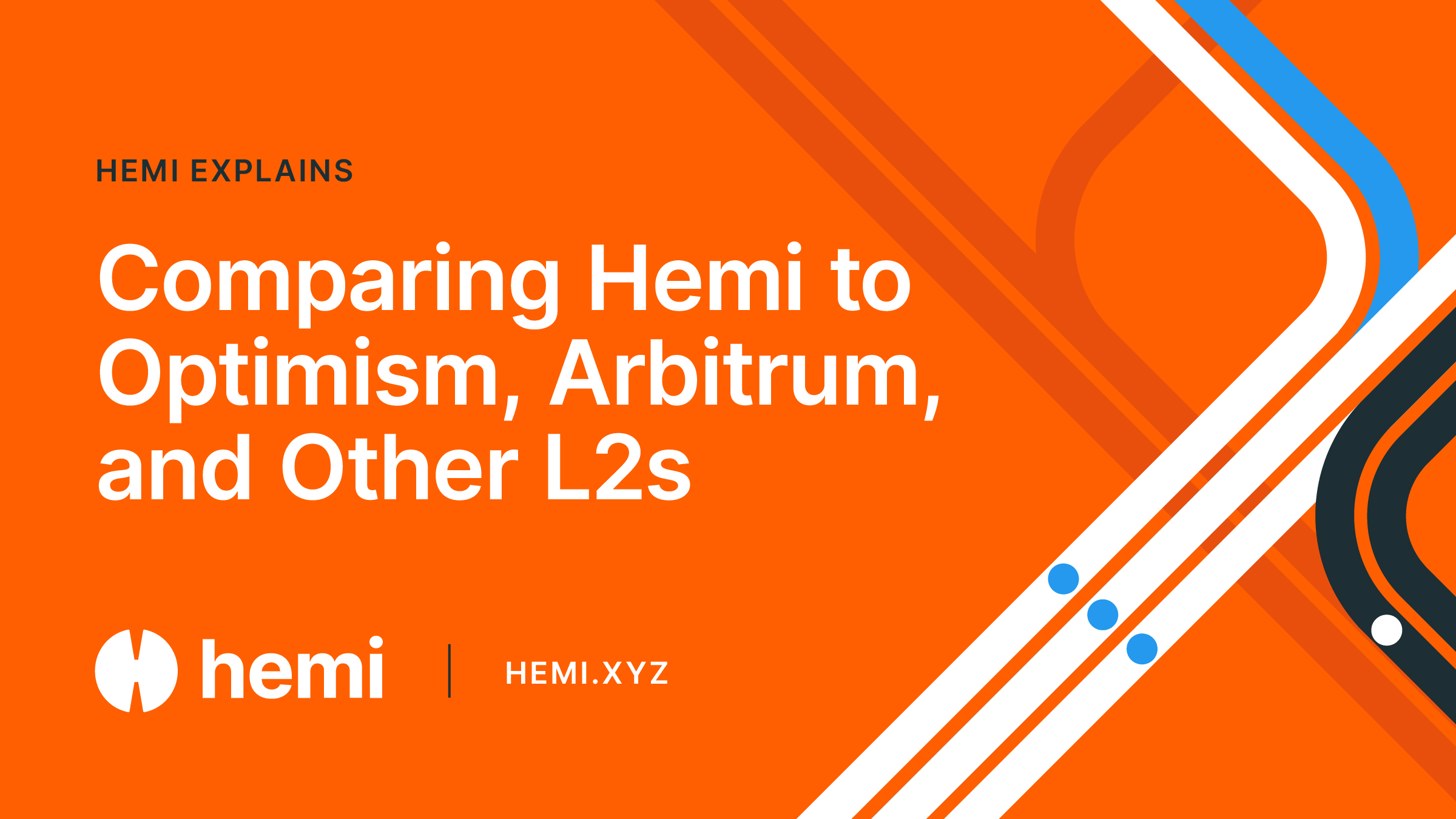- Ethereum
- Hemi
- Learn Center
- August 1, 2025
Comparing Hemi to Optimism, Arbitrum, and Other L2s

As Ethereum scales, Layer 2 solutions have become essential for reducing fees and increasing throughput. Optimism and Arbitrum are among the most widely used L2s, each offering a rollup-based approach to scaling. Hemi takes a different path, designed for multi-chain execution and bridgeless interoperability. Understanding how Hemi compares to Optimism, Arbitrum, and other L2s is key to grasping where the market is heading.
The Rollup Model: Optimism and Arbitrum
Optimism and Arbitrum both use optimistic rollups — batching transactions off-chain and posting compressed data back to Ethereum. This lowers fees and speeds up execution while inheriting Ethereum’s security.
Optimism focuses on simplicity and EVM equivalence, making it easy for developers to deploy Ethereum-native apps without rewriting code. Arbitrum offers strong compatibility as well, with a particular emphasis on performance and fraud-proof design.
However, both rely heavily on Ethereum as a settlement layer. While they can connect to other chains via crypto bridges, these integrations add complexity and introduce security concerns.
Hemi’s Multi-Chain Approach
Hemi is not just an Ethereum scaling solution — it’s built to operate natively across multiple ecosystems, including Bitcoin and Ethereum. Instead of functioning as a rollup tied to a single chain, Hemi uses Proof-of-Proof (PoP) to anchor state to different blockchains.
This design allows applications on Hemi to interact with multiple base layers without passing through a traditional crypto bridge. By using “crypto tunnels,” Hemi minimizes cross-chain risk and enables trust-minimized interoperability between ecosystems that normally can’t communicate directly.
Performance and Latency
Rollup-based L2s like Optimism and Arbitrum are optimized for Ethereum compatibility, but settlement times are tied to Ethereum’s block finality and challenge periods. This can result in delays when moving assets back to Layer 1 or across other L2s.
Hemi’s architecture bypasses many of these latency issues. Because it’s not dependent on a single base chain, it can execute cross-chain transactions more quickly, while still anchoring to the security of the chains involved.
Security Tradeoffs
Security in Optimism and Arbitrum is inherited from Ethereum. This is strong for Ethereum-focused apps, but less relevant when bridging to other networks. Hemi’s crypto tunnels shift the model — instead of securing interoperability through an external validator set, tunnels embed proof commitments into the chains themselves, making it far harder for attackers to exploit the cross-chain layer.
Developer Experience and Ecosystem Fit
For developers targeting Ethereum-first users, Optimism and Arbitrum remain the most direct choice, offering a large ecosystem and straightforward migration from Layer 1.
Hemi, by contrast, appeals to teams building applications that require native interactions across chains, whether for DeFi liquidity aggregation, multi-chain NFTs, or Bitcoin-Ethereum composability. This positions Hemi less as a competitor to Optimism and Arbitrum in their current lanes, and more as an expansion of what a Layer 2 can be.